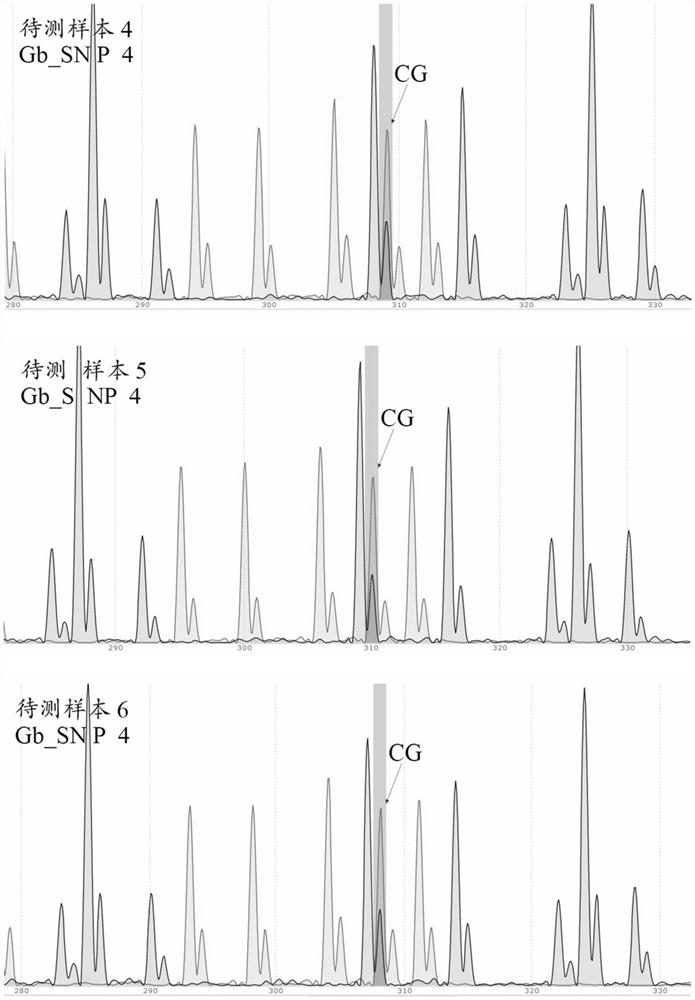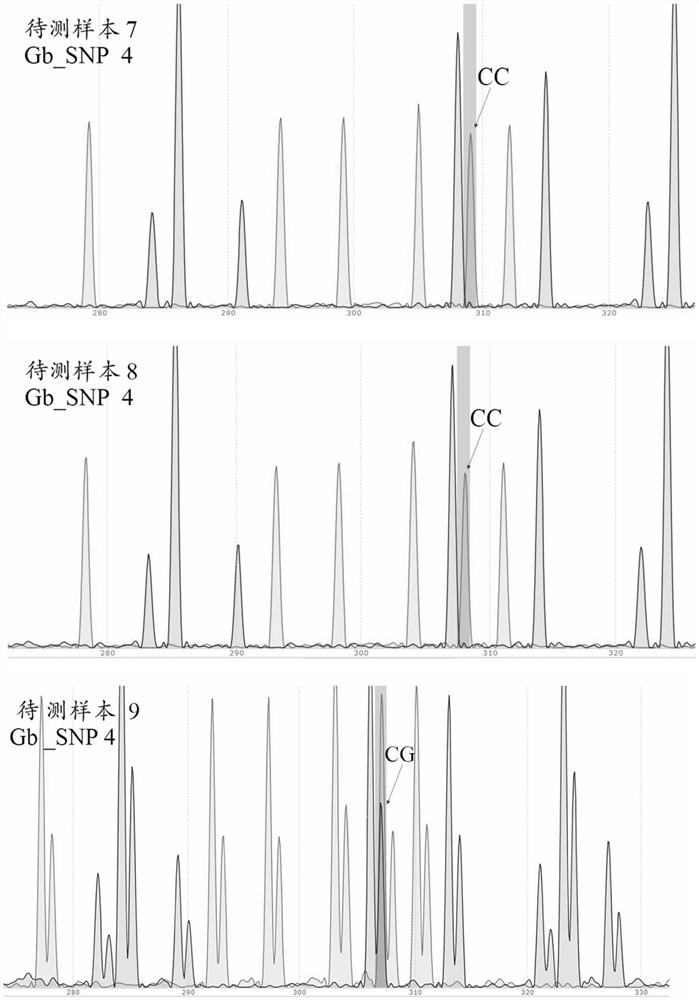Group of ginkgo gender-associated SNP sites and primers and application thereof
A technology of ginkgo biloba and locus is applied in the field of plant sex identification, which can solve the problems of lack of timeliness, environment, tree age, origin and other factors, and achieve the effects of simple and fast operation, convenient material collection, and high sensitivity of detection results.
- Summary
- Abstract
- Description
- Claims
- Application Information
AI Technical Summary
Problems solved by technology
Method used
Image
Examples
Embodiment 1
[0042]Collect 11 ancient tree groups in the main ginkgo distribution areas in China, mainly including 6 ancient tree groups in Guizhou Province, Chongqing City, and Shaanxi Province in the west, 3 ancient tree groups in Hubei Province and Guangxi Province in the central part, and In the east, there are 2 groups of ancient trees in Zhejiang Province. Each group of ancient trees collected 13-15 samples, a total of 160 samples. Using simplified genome technology, SNP sites mining and genotyping were performed on 160 samples from 11 ancient ginkgo tree populations, and a total of 14,238,535 SNP sites and genotyping information were obtained. SNP loci were filtered through GQ (Genotype quality), MQ (Mapping quality), minimum allele frequency (MAF), Miss rate, number of reads (DP) parameters, and Hardy-Weinberg genetic balance, and finally obtained 176,182 high Quality SNP loci. Based on the obtained SNP loci, a mixed linear model was used to conduct genome-wide association analysi...
Embodiment 2
[0046] Randomly select the leaves of 10 ginkgo individuals (5 females and 5 males) of known gender from the ginkgo trees on the campus of Nanjing Forestry University in Nanjing City, Jiangsu Province, and use the 6 SNP sites in Example 1 for gender identification after the sequence is disrupted , including the following steps:
[0047] 1) DNA extraction was completed using the Plant Genomic DNA Extraction Kit (DP305) from Tiange Biochemical Technology Co., Ltd.
[0048] 2) Perform PCR amplification according to the primers in Table 1 according to the following PCR reaction system and reaction procedure.
[0049] PCR reaction system 10μL, including template DNA 1μL (40ng), 1×Buffer 1μL, 10mM dNTPs 0.2μL (Thermo scientific company), 25mM MgCl 2 1 μL, F-primer 0.2 μL (Shanghai Jerui Biological Co., Ltd.), R-primer 0.2 μL (Shanghai Jerui Biological Co., Ltd.), Taq enzyme 0.2 μL (Thermo scientific company), ddH 2 O6.2 μL;
[0050] The PCR reaction program was: pre-denaturation ...
Embodiment 3
[0057] It is basically the same as in Example 1, except that the sampling material is changed, and the leaves are replaced with winter buds or flowers, all of which can obtain the same results as in Example 1.
PUM
 Login to View More
Login to View More Abstract
Description
Claims
Application Information
 Login to View More
Login to View More - R&D
- Intellectual Property
- Life Sciences
- Materials
- Tech Scout
- Unparalleled Data Quality
- Higher Quality Content
- 60% Fewer Hallucinations
Browse by: Latest US Patents, China's latest patents, Technical Efficacy Thesaurus, Application Domain, Technology Topic, Popular Technical Reports.
© 2025 PatSnap. All rights reserved.Legal|Privacy policy|Modern Slavery Act Transparency Statement|Sitemap|About US| Contact US: help@patsnap.com



